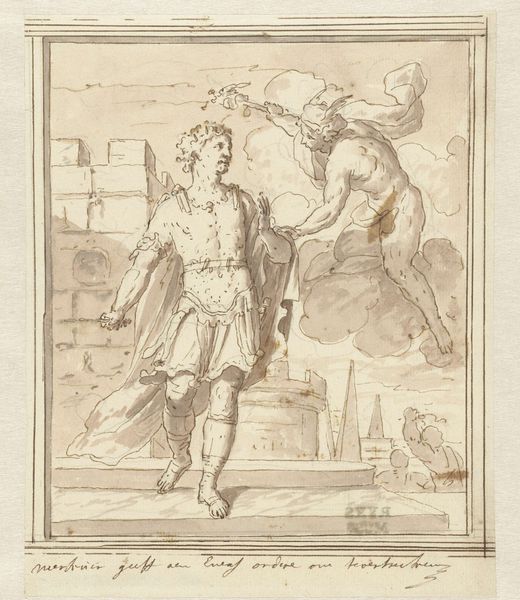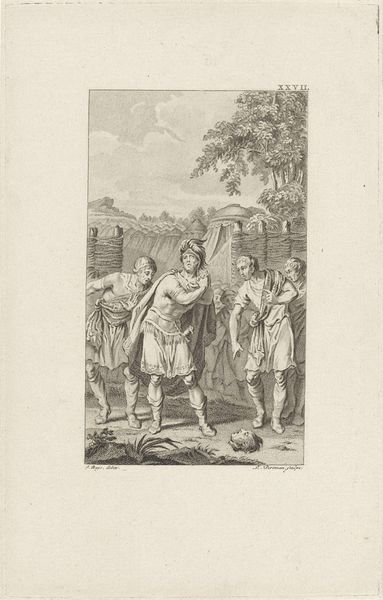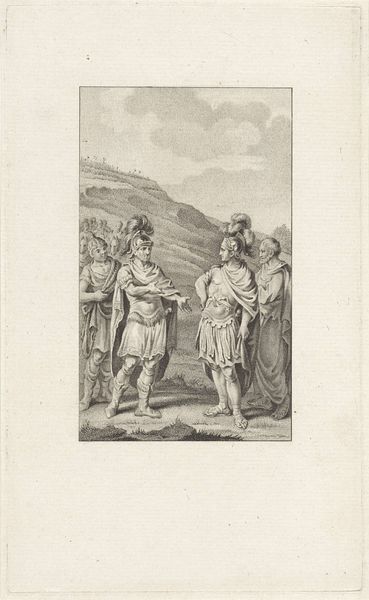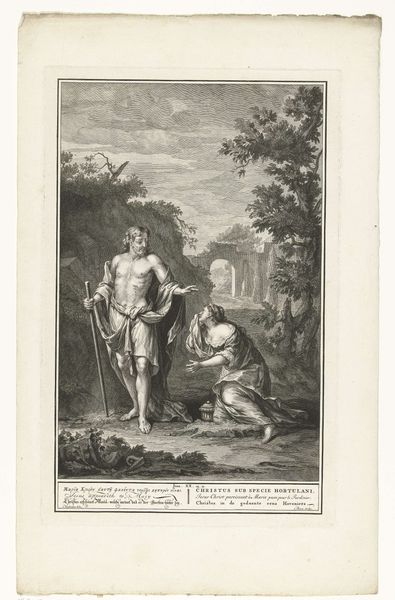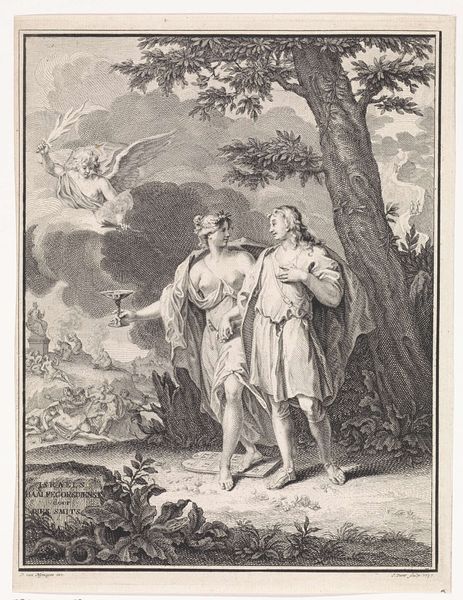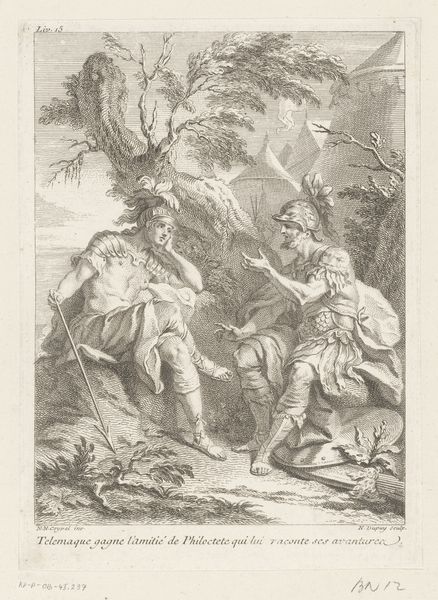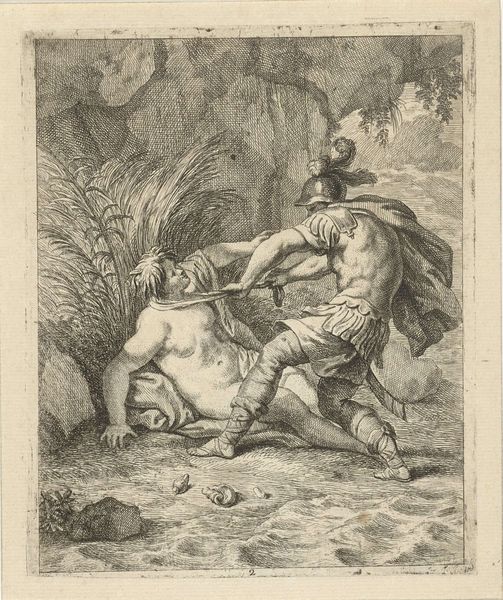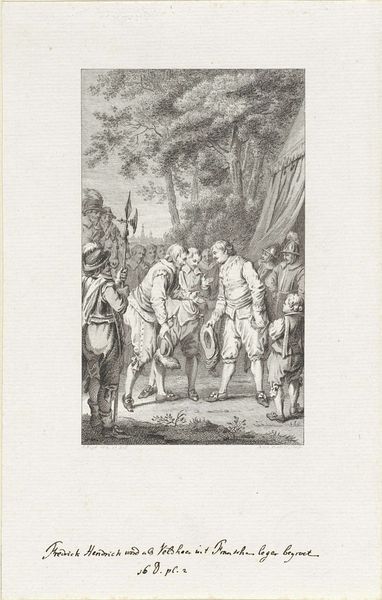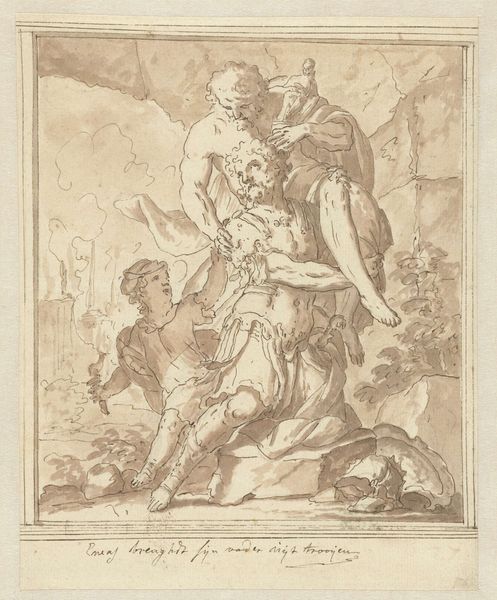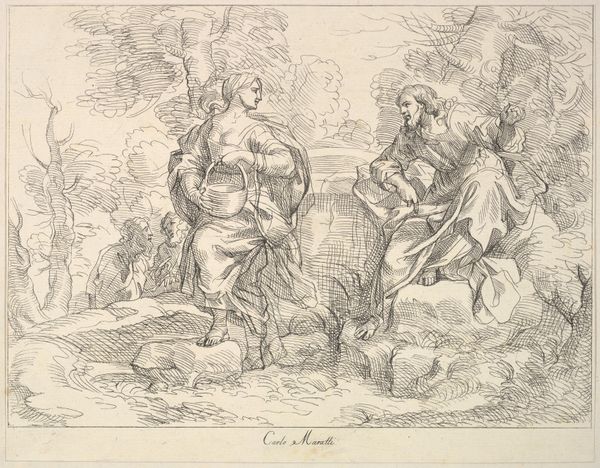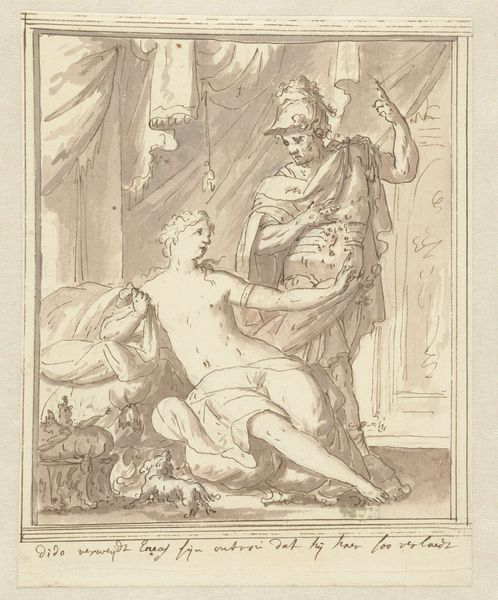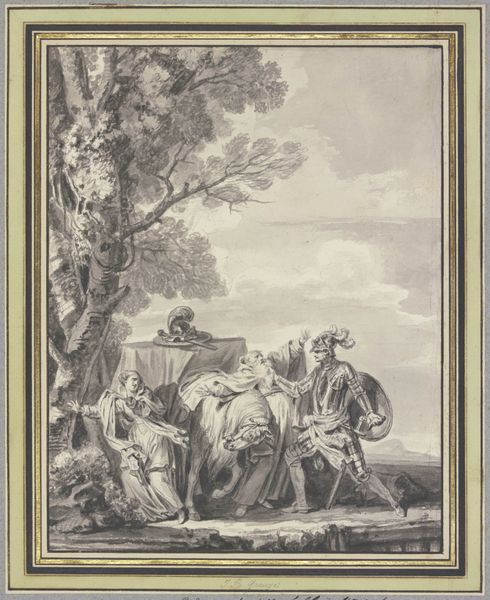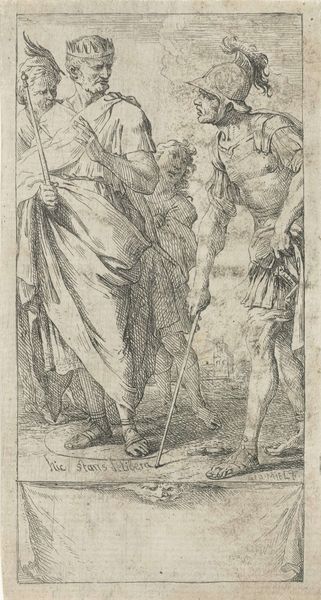
Aenaes en Achates ontmoeten Venus in de gedaante van een jageres 1700 - 1704
0:00
0:00
drawing, paper, ink
#
drawing
#
narrative-art
#
baroque
#
pencil sketch
#
figuration
#
paper
#
ink
#
history-painting
Dimensions: height 189 mm, width 151 mm
Copyright: Rijks Museum: Open Domain
Curator: Here we have Mattheus Terwesten's drawing, made with pen, ink and pencil on paper, titled "Aenaes en Achates ontmoeten Venus in de gedaante van een jageres," dating back to around 1700-1704. Editor: Oh, that's intriguing! It looks almost dreamlike, all sketched lines and soft washes. Sort of gives the impression of something half-remembered, or maybe even imagined. Curator: It's a baroque depiction of a scene from Virgil’s Aeneid. Aeneas, accompanied by Achates, encounters his mother Venus, disguised as a huntress. These encounters always carried symbolic weight; a hero encountering the divine, even disguised, promises profound consequences. Editor: Disguised, huh? It’s funny, that disguise seems pretty flimsy! I mean, she's practically floating, radiating light. Is this about the unknowability of divine intervention, perhaps? We recognize something significant is happening even if we don't fully grasp its meaning. Curator: Exactly. The Baroque period embraced allegory and complex narratives. Consider the formal hunting attire, a well-established, recognizable sign of high-born status. Through visual coding the audience understood both the symbolic hunt and its meaning within larger socio-cultural codes of leadership, religion, morality. Editor: And the contrast between her ethereal lightness and the more grounded, earthly figures of Aeneas and Achates is wonderful! They look so weighted down by armor, while she seems to almost evaporate into the landscape. You could almost believe that a simple drawing like this contains the world. Curator: Terwesten cleverly employs the interplay between the seen and unseen, the mortal and immortal. His drawing serves as a conduit. Viewers across centuries gain insight into the emotional landscapes, and belief systems from the era and of course their continuous, echoing traces in our modern sensibilities. Editor: It's really evocative; a testament to the power of simple lines to conjure myth. Even after centuries. I think there is something so intimate about seeing that artistic creative spark here. Curator: Precisely. Through this very sketchiness, this “incomplete” rendering, he achieves something more complete: an invitation to engage and contemplate, even after centuries. Editor: Well, I know that this drawing made me do so.
Comments
No comments
Be the first to comment and join the conversation on the ultimate creative platform.
